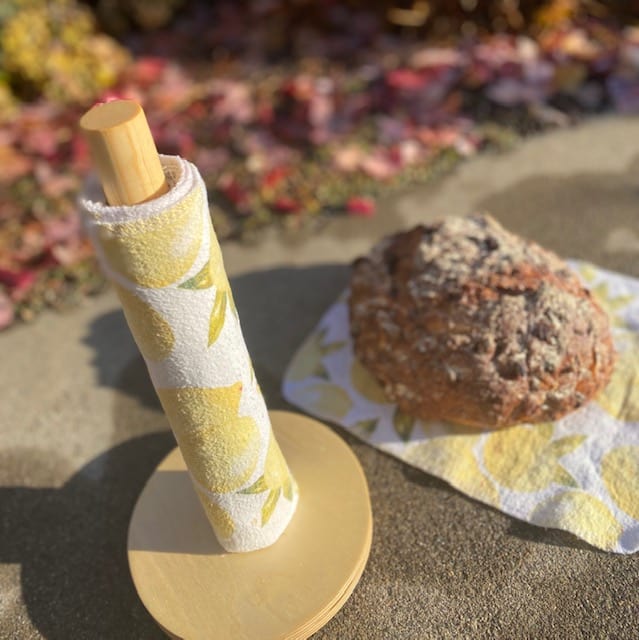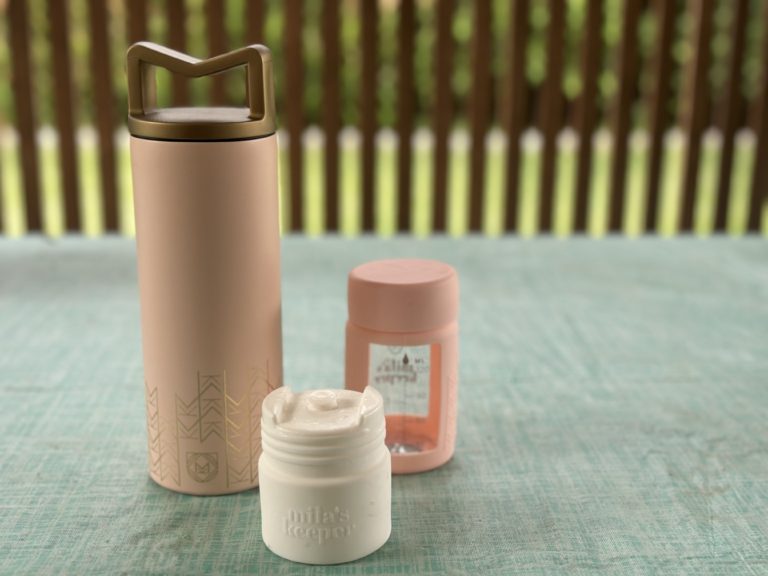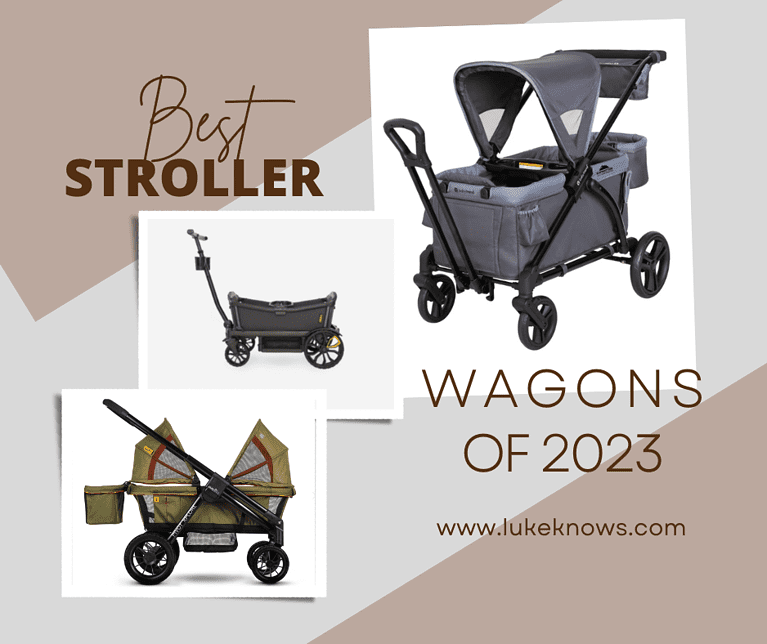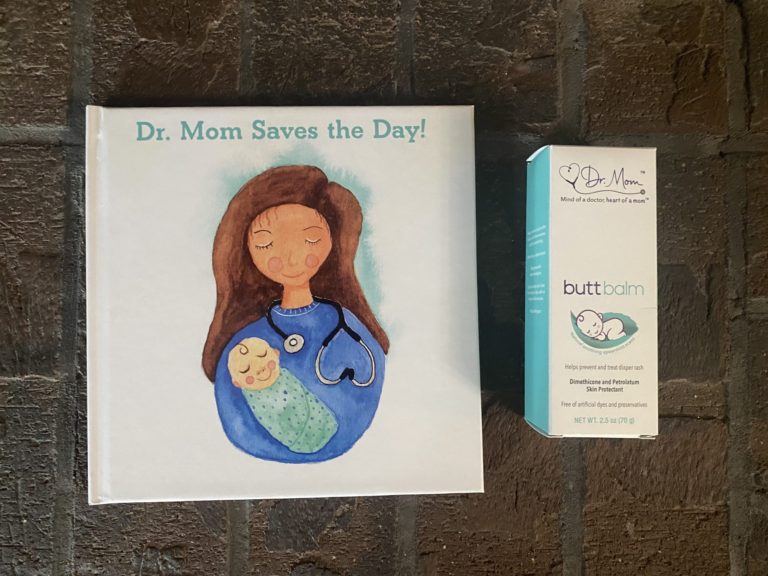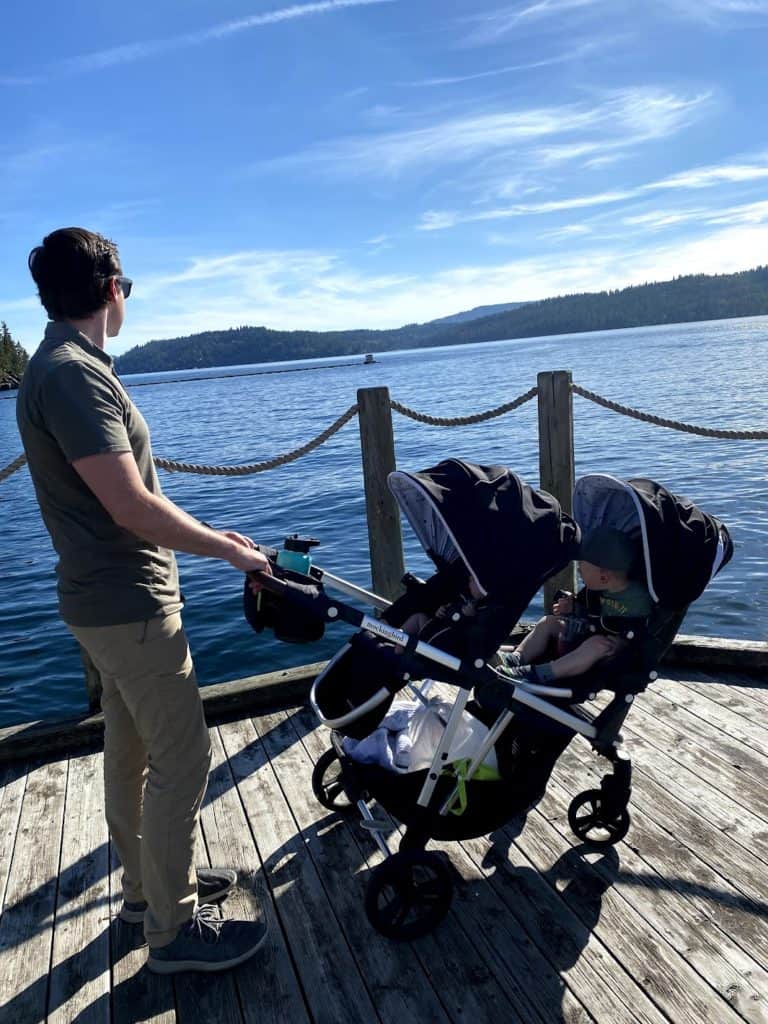
The best bedside bassinets are essential when providing a safe and secure sleeping space for your newborn. These innovative sleep solutions offer parents peace of mind while ensuring their little ones have a cozy space to rest right next to them in the same room.
This comprehensive guide will uncover the features that set bedside bassinet apart from other sleep solutions and how to choose one best suited for your baby’s needs..
Additionally, you’ll learn how long babies can safely use these bassinets and gain valuable insights on helping them easily transition into their new sleeping area. With expert advice and practical tips, you’ll be well-equipped to make informed decisions when choosing the perfect bedside sleeper bassinet for your precious bundle of joy.
This article may contain affiliate links. By clicking a link we may receive a small commission at no cost to you. Please see our privacy policy and Disclosure for more details.
5 Best Bedside Bassinets
Baby bassinets are incredibly convenient for mothers who like the convenience of a baby sleeping in the same room. Bedside sleepers make it easy to follow safe sleep guidelines and give you peace of mind without sleeping in the same bed.
Let’s dive into the best bedside sleepers…
1. HALO BassiNest 3.0-Luxe Series
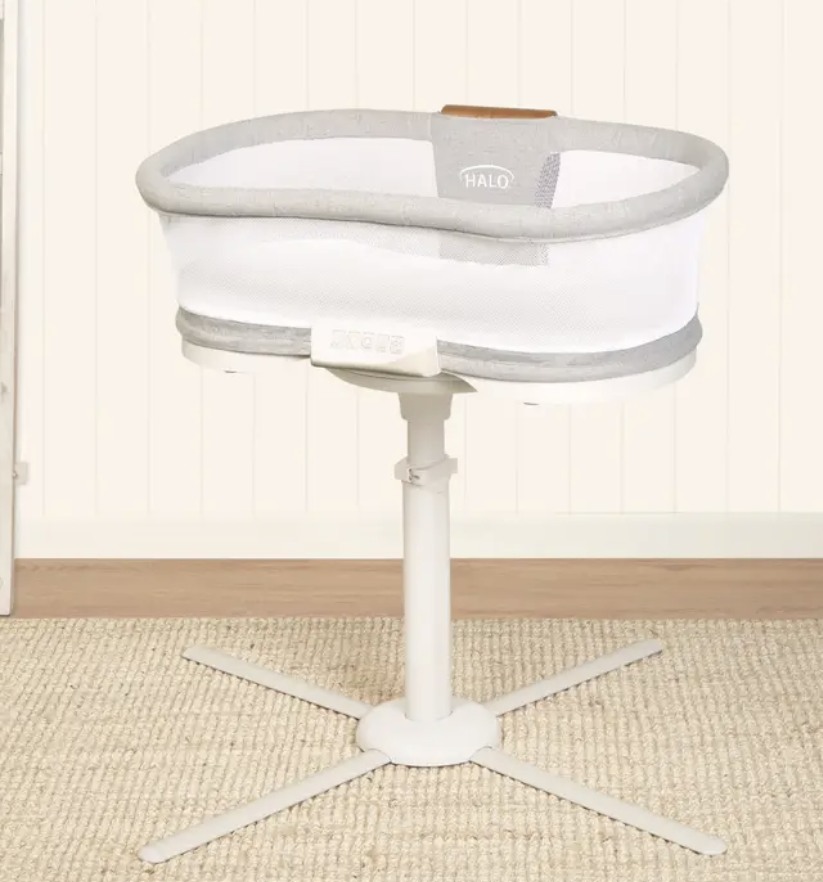
Halo BassiNest 3.0-Luxe Series
The BassiNest 3.0 offers a 360-degree swivel, adjustable height, and a retractable side wall. It also includes soothing features like sounds, vibrations, and a nightlight. Overall, it provides excellent convenience and functionality.
Pros:
- Swivels over the bed
- mesh walls
- attached caddy to hold diapers
- can be used as a co-sleeper
Cons:
- hard to move the whole bassinet to different locations
2. Arm’s Reach Concepts Clear-Vue Co-Sleeper
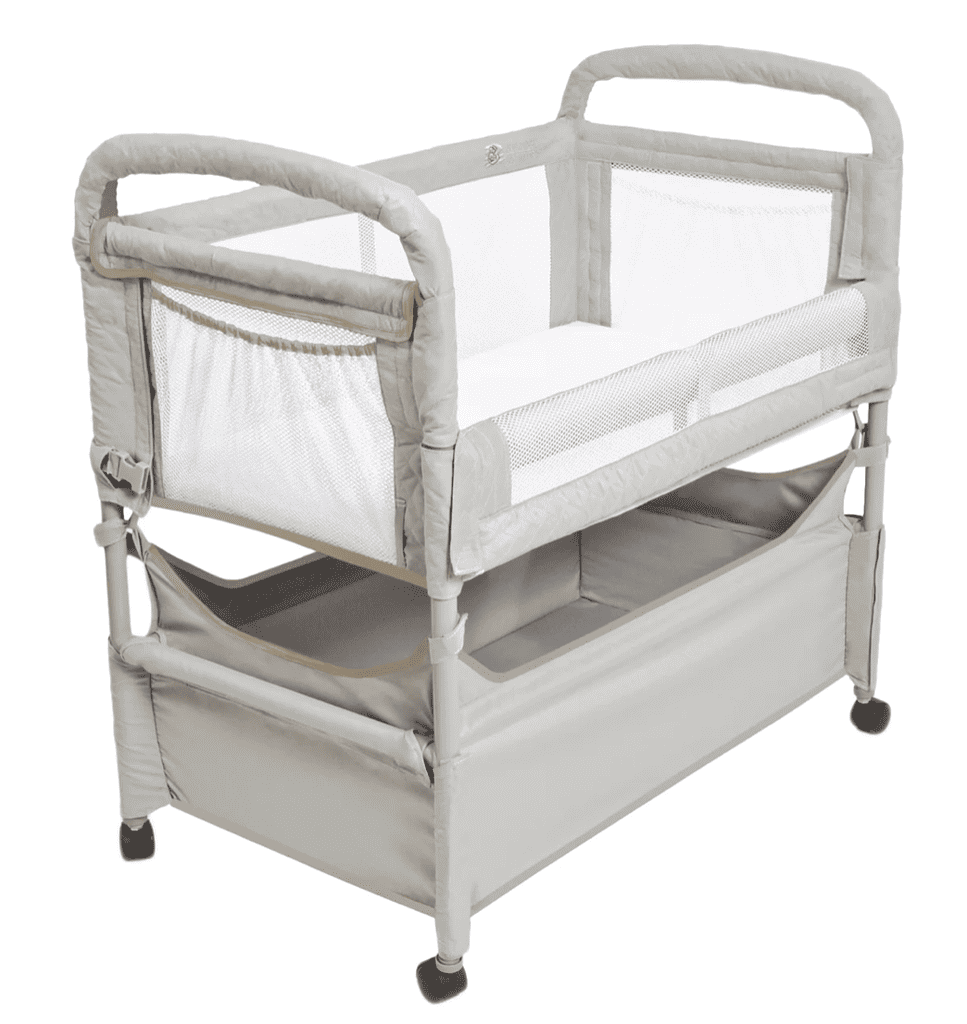
Arm’s Reach Clear-Vue Co-Sleeper
This bassinet is highly regarded for its clear mesh sides, allowing easy visibility and access to your baby. It offers adjustable height positions, making it compatible with various bed heights. The Arm’s Reach Co-Sleeper is known for its quality and durability.
Pros:
- large under-storage area
- Easy to move around the house
- can be used as a co-sleeper
- mesh walls
Cons:
- does not swivel over the bed
3. Baby Bjorn Cradle
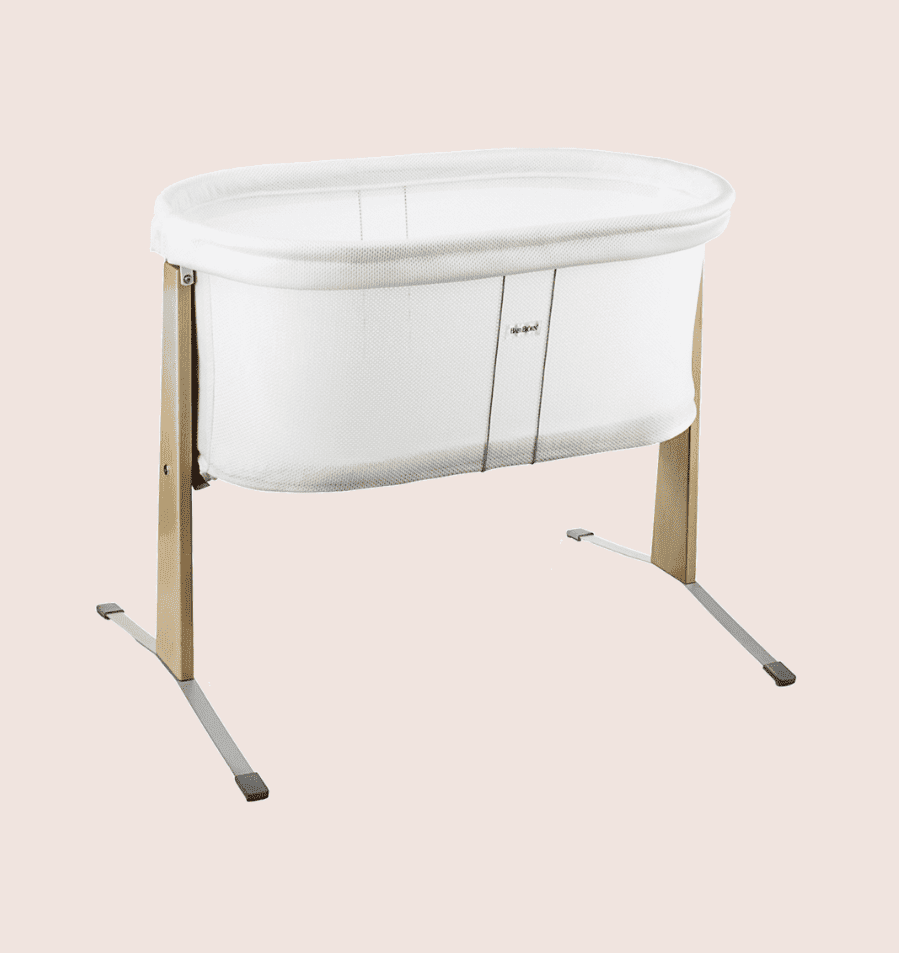
Baby Bjorn Cradle
The Baby Bjorn Cradle is loved for its sleek design and comfortable rocking motion. It is made of breathable mesh fabric and has a gentle motion that can be controlled by hand or the baby’s movements. While it doesn’t have all the features of a traditional bedside bassinet, it provides a cozy and secure sleeping environment.
Pros:
- Sleek design
- Mesh walls
- Lightweight & easy to move around the house
- good for small spaces
Cons:
- does not swivel over the bed
- small sleeping area (baby may grow out of the bassinet quickly)
- can’t be used as a co-sleeper
4. Mika Micky Baby Bassinet Bedside Sleeper Bedside Crib
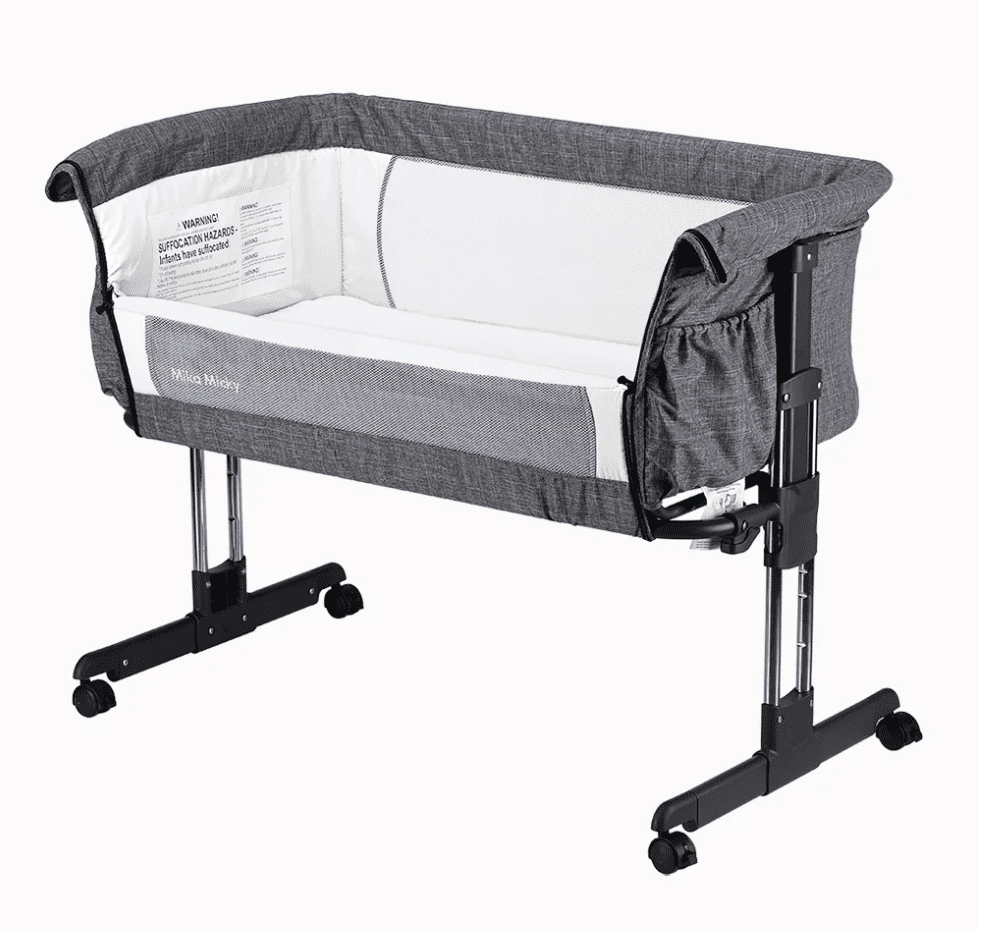
Mika Micky Baby Bassinet Bedside Sleeper
This bassinet offers a stable and secure sleeping space for the baby, with adjustable height and sidewall options. It also features a storage pocket for convenience. While not as well-known as some other brands, it has received positive feedback from customers.
Pros:
- large sleeping area
- easy to move around the house
- mesh walls
- can be used as a co-sleeper
- good for heavier babies ( up to 33 lbs)
Cons:
- some users note a slight wobble
5. Cloud Baby Bedside Baby Bassinet
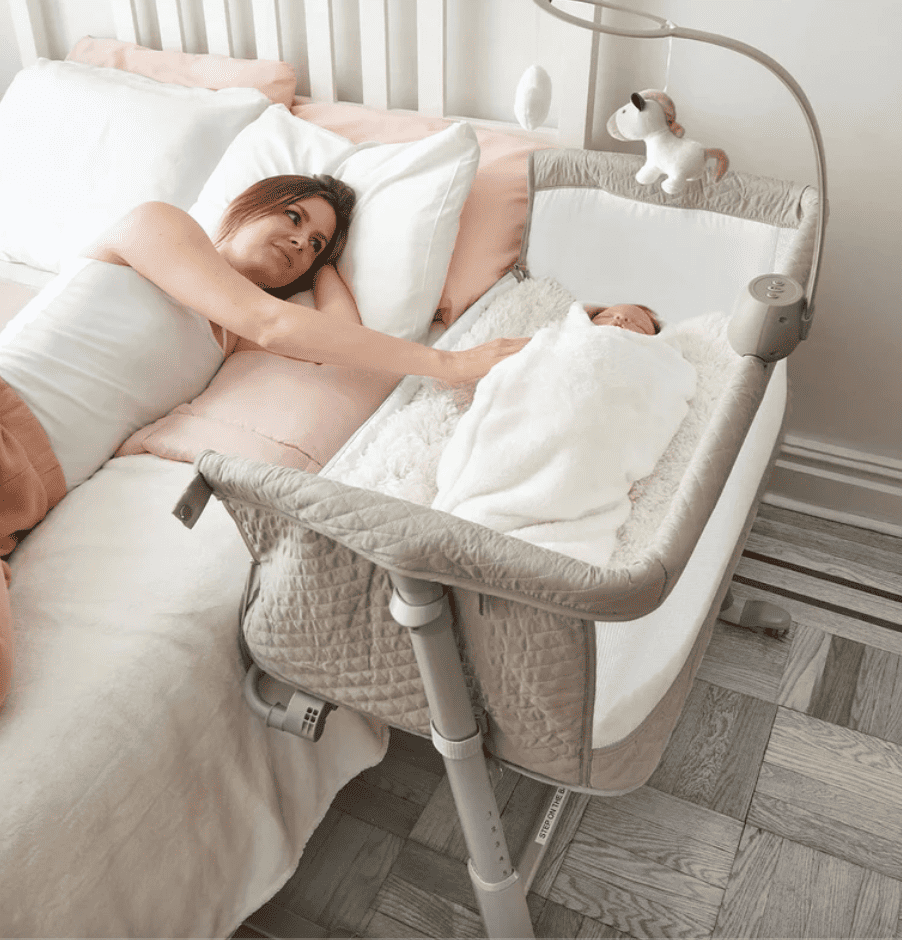
Cloud Baby Bedside Baby Bassinet
This bassinet is designed with convenience in mind, featuring adjustable height and a side wall that can be lowered. It includes a gentle rocking feature and comes with a comfortable mattress. While it may not have as many features as other options, it still provides a safe and cozy sleeping space for the baby.
Pros:
- easy to move around the house
- mesh walls
- can be used as a co-sleeper
- has a washable mattress
- 9 different height positions
Cons:
- some users note that the bassinet is not level
What is a Bedside Bassinet?
A bedside bassinet, a co-sleeper, or a sidecar crib is an ideal option for parents who wish to have their newborns close at night; it offers both convenience and safety by being placed right next to the parent’s bed. Designed with convenience and safety in mind, these compact cribs can be placed right next to the parent’s bed, allowing for easy access when it’s time for feeding, soothing, or simply checking on your little one.
The main advantage of using a bedside bassinet over a traditional crib is that it promotes bonding between parent and baby while providing separate sleeping spaces. This arrangement has been proven to reduce the risk of Sudden Infant Death Syndrome (SIDS) by keeping babies within arm’s reach but not sharing the same sleep surface as their caregivers.
Besides promoting safe sleep practices, bedside bassinets come with several other benefits:
- Convenience: With your baby just inches away from you at night, there’s no need to get up multiple times throughout the evening – perfect for exhausted new parents.
- Easier breastfeeding: Nursing moms will appreciate being able to feed their infants without leaving their beds. Many models even feature drop-down sides that make nighttime nursing sessions more comfortable.
- Soothing capabilities: Some bedside bassinets are equipped with built-in features such as vibration settings or white noise machines explicitly designed to help lull your baby back into slumber after waking up during the night.
In addition to these advantages, many modern bedside bassinets are designed with style in mind. From sleek, minimalist options to more traditional wooden designs, a bedside bassinet will seamlessly blend into your bedroom decor.
If you’re in the market for a bedside bassinet, there are a few things to keep in mind to ensure you choose the right one for your needs:
- Safety: Look for bedside bassinets certified by the Juvenile Products Manufacturers Association (JPMA) or another reputable organization. Ensure the bassinet is sturdy and has breathable sides to prevent suffocation hazards.
- Portability: If you plan on traveling with your baby or moving the bassinet from room to room, consider a portable bassinet that is lightweight and easy to transport.
- Size: Measure the height of your bed to ensure the bassinet will fit properly. Some models are adjustable to accommodate different bed heights.
- Comfort: Look for a bassinet with a comfortable mattress and fitted sheet. Some models even come with a mattress pad for added comfort.
A bedside bassinet is a convenient and safe sleeping option for parents to have their baby close by during the night. To decide on the best bedside bassinet, look at security features, usability, portability, and more.
With its many benefits and convenient features, it’s no wonder that more and more parents are choosing this option for their newborn babies’ sleep needs.

What Makes the Best Bedside Bassinet?
When choosing a bedside bassinet for your little one, it’s essential to prioritize safety and functionality. Here are some key features that make up the best bedside bassinets:
Safety Features
The most crucial aspect of any baby product is its safety features. Look for a bassinet that meets all current safety standards, including sturdy construction, secure locking mechanisms, and no gaps or sharp edges.
Breathable Mesh Sides
A suitable bedside bassinet should have breathable mesh sides to ensure proper air circulation around your baby while they sleep. This feature keeps them comfortable and reduces the risk of suffocation.
Adjustable Height
An adjustable height option allows you to customize the bassinet’s position according to your bed’s height, ensuring easy access when tending to your baby during nighttime feedings or diaper changes. Some models even offer an incline feature for babies with reflux issues.
Ease of Assembly and Portability
- Ideally, a great bedside bassinet should be easy to assemble without requiring too many tools or complicated instructions.
- Portability for some, is another crucial factor as it enables you to move the bassinet from room to room effortlessly – look for lightweight designs with wheels or casters if this is important to you.
Durability and Longevity
It’s essential that your chosen bedside bassinet can withstand daily use over several months without showing signs of wear and tear; therefore, opt for reputable brands known for their durability and quality materials.
Considering these factors, you can choose the best bedside bassinet that meets your needs while ensuring your baby’s safe and comfortable sleeping environment. If you’re looking for a portable option, consider a portable bassinet or a travel crib. Invest in a crib mattress, fitted sheet, and mattress pad for comfort and protection.
Key takeaway: For moms recovering from childbirth, a bedside sleeper bassinet with adjustable height is an excellent option for easy access to your baby without getting out of bed.
Ultimately, the best bedside bassinet should be comfortable for both baby and parent while providing a safe sleep environment. Additionally, it is vital to understand how long babies can use these bassinets before transitioning them into a crib.
How Long Can Babies Use Bassinets?
Knowing how long your baby can safely use a bassinet before transitioning to a crib or other sleeping arrangements is essential as a new parent. Most babies can use a bassinet until they reach 15-20 pounds or until they can roll over or push up on their hands and knees, whichever comes first. Monitoring your baby’s growth and development is critical for ensuring their safety by making the necessary adjustments in time.
Bassinets have weight limits that vary depending on the specific model, so always refer to the manufacturer’s guidelines when determining if your baby has outgrown their bassinet. Some typical milestones that signal it may be time for an upgrade include the following:
- Rolling Over: Once your baby starts rolling over in their sleep, it could pose potential risks such as suffocation in the soft bedding of a bassinet.
- Sitting Up: When babies begin sitting up independently, they might attempt climbing out of the bassinet, which increases the risk of falls and injuries.
- Crawling/Pushing Up: As soon as infants start pushing themselves up onto all fours or crawling around, there is an increased chance that they will accidentally topple out of their bedside sleeper.
To ensure optimal safety during this transitional period from bassinet to crib, consider investing in products like high-quality cribs and sleep sacks designed for older infants and establishing a sleep routine that helps your baby adjust to their new sleeping environment.
Bedside bassinets can be used until your baby is about 4-6 months old. This is about the time your child will reach the weight limit of the bassinet and will start rolling over and practice standing. If your baby reaches the max weight limit of your specific bassinet or starts to roll over or push themself up, baby should transition into a crib.
Bassinets provide infants with a secure and comfortable environment during their initial months, but it’s essential to know when the time is right to transition away from them. Parents can help ensure their little ones get the best sleep possible with proper care and using bassinets. To ensure your baby’s optimal sleep quality, let us look at how you can best utilize a bassinet.
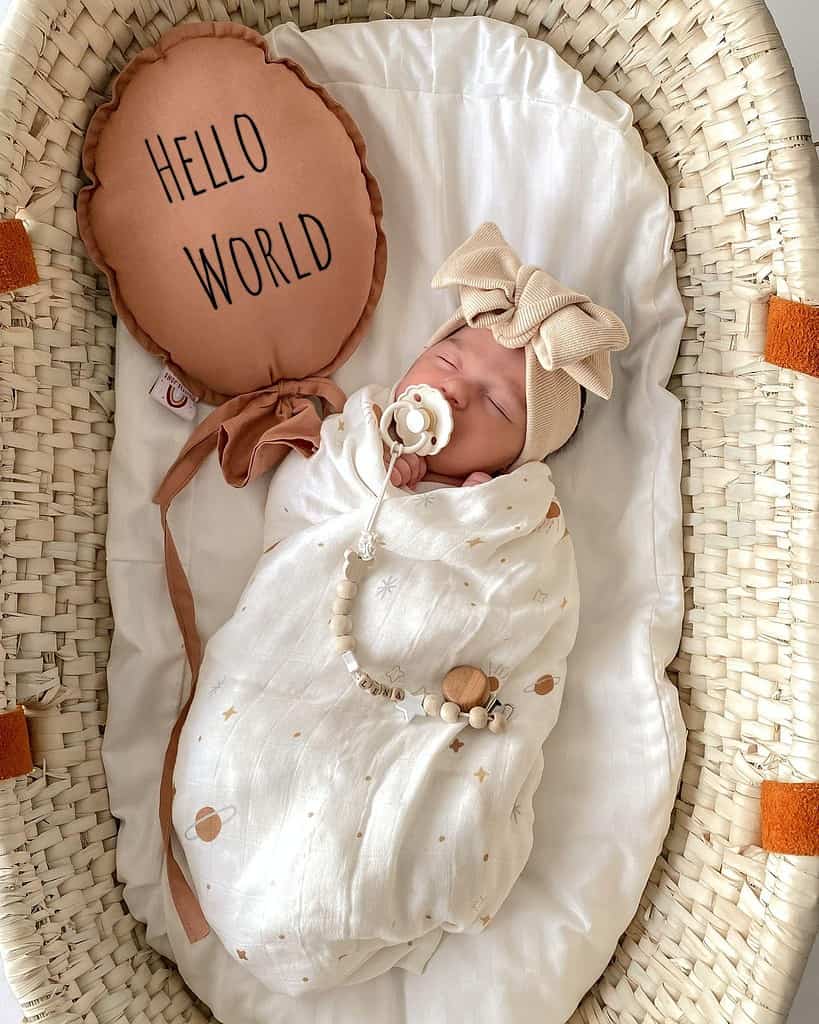
How to Help Your Baby Sleep in a Bassinet
Getting your baby to sleep comfortably and safely in their bassinet is essential for their well-being and your peace of mind. Here are some tips on how to help your little one settle into their bedside bassinet more easily:
1. Create a Comfortable Environment
Ensure the bassinet has a firm, flat mattress with no gaps between the mattress and the sides of the bassinet. Use fitted sheets designed explicitly for bassinets, as loose bedding can pose suffocation risks. Certified pediatric sleep consultants recommend using crib mattresses and mattress pads that fit snugly in the bassinet.
2. Maintain an Ideal Room Temperature
The ideal room temperature for babies is around 68-72°F (20-22°C). Ensure they’re dressed appropriately – not too warm or cold – so they can sleep soundly without discomfort. Portable bassinets like the Dreamer Bassinet or the Karley Bassinet are great options for moms recovering from childbirth, as they can be moved from room to room to keep the baby close by.
3. Incorporate White Noise
White noise machines or apps can be helpful in soothing babies by mimicking sounds from inside the womb. This familiar background noise may help them feel secure and fall asleep faster.
4. Establish a Consistent Bedtime Routine
- A soothing bath before bedtime can help ease your infant’s muscles, encouraging them to drift off into slumber.
- Gentle massage: Massaging your baby using gentle strokes with lotion or oil can also aid relaxation while promoting bonding between you two.
- Nursing/feeding: Feedings should ideally occur right before bedtime, so your baby’s tummy is complete and they’re ready for sleep.
- Swaddling: Wrapping your baby snugly in a swaddle can help them feel secure and reduce the startle reflex that may wake them up at night.
5. Put Baby Down Drowsy but Awake
This helps babies learn to self-sooth and fall asleep on their own. Place your baby in the bassinet while still awake when noticing signs of drowsiness (such as yawning or rubbing eyes). This will encourage healthy sleep habits as they grow older. Bedside sleeper bassinets make it easy to keep babies close by, especially for moms recovering from childbirth.
Every baby is unique, so their best sleeping habits may vary. Be patient, consistent, and willing to try various techniques until you find what best suits your little one’s needs when it comes to sleeping soundly in their bedside bassinet. A travel crib or a freestanding bassinet can also be great options for babies who need to sleep in different locations or for moms who have tall beds.
Key Takeaway: To help your baby sleep comfortably and safely in their bedside bassinet, create a comfortable environment with a firm mattress and fitted sheets. Incorporate white noise to soothe them, establish a consistent bedtime routine, including swaddling, and put them down drowsy but awake to encourage healthy sleep habits.
FAQs about Best Bedside Bassinets
Are Bedside Bassinets Worth It?
Yes, bedside bassinets are worth the investment for new parents. They provide safe and convenient sleeping space for newborns, allowing easy access to the baby during nighttime feedings and soothing. Additionally, they promote bonding between parents and their infants.
What Are the Pros of a Bedside Bassinet?
- Convenience: Easy access to your baby at night
- Safety: Provides a separate sleep surface that reduces SIDS risk
- Bonding: Facilitates closeness with your newborn
- Mobility: Many models are portable or have wheels for easy movement
- Versatility: Some models can be used as standalone bassinets or attached to beds
Are Bedside Bassinets Safe for Newborns to Sleep In?
Bedside bassinets are considered safe when they meet safety standards set by organizations like the Consumer Product Safety Commission (CPSC) and ASTM International. Ensure you follow all manufacturer guidelines regarding weight limits, assembly instructions, and proper usage.
Conclusion
Choosing the best bedside bassinet is crucial for new parents who want to keep their baby close while sleeping. This type of baby bassinet is beneficial for mothers who just had childbirth, especially those who had a c-section. They are also excellent for those who want their babies close to them and practice safe sleeping.
In conclusion, investing in a quality bedside bassinet provides convenience, safety, and comfort for you and your newborn. It is one of the most necessary baby gear items. Before investing in a bedside bassinet, it is necessary to research the features that are most beneficial for you and your baby.
If you’re looking for more parenting advice or product recommendations like the best bedside bassinets, check out Luke Knows, where our team of experts provides reliable information to help make parenting easier.
